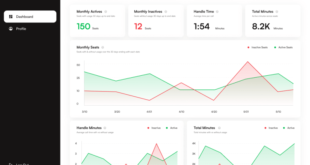
Up until now, T-Mobile’s nationwide 5G network has had the advantage of breadth without the value of depth, covering more than half of the United States with low band 600MHz signals that are in some cases no faster than 4G. That’s about to change, the company said today, as it has activated considerably faster 2.5GHz mid band 5G towers in nearly 90 cities and towns, and is preparing to reach “thousands more” by the end of 2020. The move could cement T-Mobile’s 5G network as both the nation’s broadest and fastest — a major bragging point for the second- or third-place U.S. carrier.
T-Mobile was among the world’s first carriers to posit a “layer cake” approach to 5G, relying on long-distance but slow 600MHz signals as a blanket-style “coverage layer” everywhere, mid band 2.5GHz to provide faster 5G across most cities and towns, and short distance but fast millimeter wave signals in the most densely populated areas. While it had low and high band spectrum ready to deploy, it had to wait on finalization of its merger with Sprint to acquire and repurpose the 2.5GHz mid band spectrum — a process that it began in earnest earlier this year.
Soon after the merger closed, T-Mobile commenced limited 2.5GHz service in New York City and Philadelphia, subsequently adding Atlanta, Chicago, Dallas, Houston, Los Angeles, and Washington D.C. to the list. Today, the list has grown by an additional 81 cities and towns, including a handful of locations in the states of California, Florida, Georgia, Illinois, New York, New Jersey, North Carolina, Pennsylvania, and Virginia, with narrower deployments in Indiana, Maryland, Massachusetts, Michigan, Minnesota, Missouri, Oregon, Texas, and Washington states.
Unlike its 600MHz 5G service, which could peak at around 300Mbps under ideal conditions but commonly delivers 4G-like speeds of only 50Mbps in major cities, T-Mobile’s 2.5GHz 5G promises average speeds of 300Mbps and peak speeds of 1Gbps. That’s up from the 200Mbps average and 600-700Mbps peaks Sprint promised for the same spectrum last year, though performance will vary between locations. Moreover, 2.5GHz signals are capable of penetrating walls, and reaching much further than millimeter wave 5G, which so far has been the only version adopted by top U.S. carrier Verizon — a decision that has seriously limited its population coverage.
T-Mobile says that it is “on track to light up 1,000 sites per month with 2.5GHz 5G,” and will offer the service “in thousands of cities and towns across the country” by the end of 2020, including suburban and rural areas. By comparison, Verizon and AT&T have signaled that they will be bolstering their competing 5G networks with some mix of low and mid band spectrum this year, though T-Mobile says it has nearly two to three times as much of that spectrum as AT&T and Verizon, respectively. All three carriers have been active participants in U.S. auctions to acquire more spectrum, “the mother’s milk of wireless technology,” in an effort to deliver higher speed cellular services to customers.
Despite misleading marketing by carriers, U.S. 5G speeds are currently among the worst in the world, despite the 5G standard’s potential for transformatively high bandwidth and network responsiveness. 5G is widely expected to enable everything from large-scale industrial automation to mixed reality streaming and persistent communications between autonomous vehicles, but depends heavily on new network hardware to take advantage of the standard’s capabilities.



